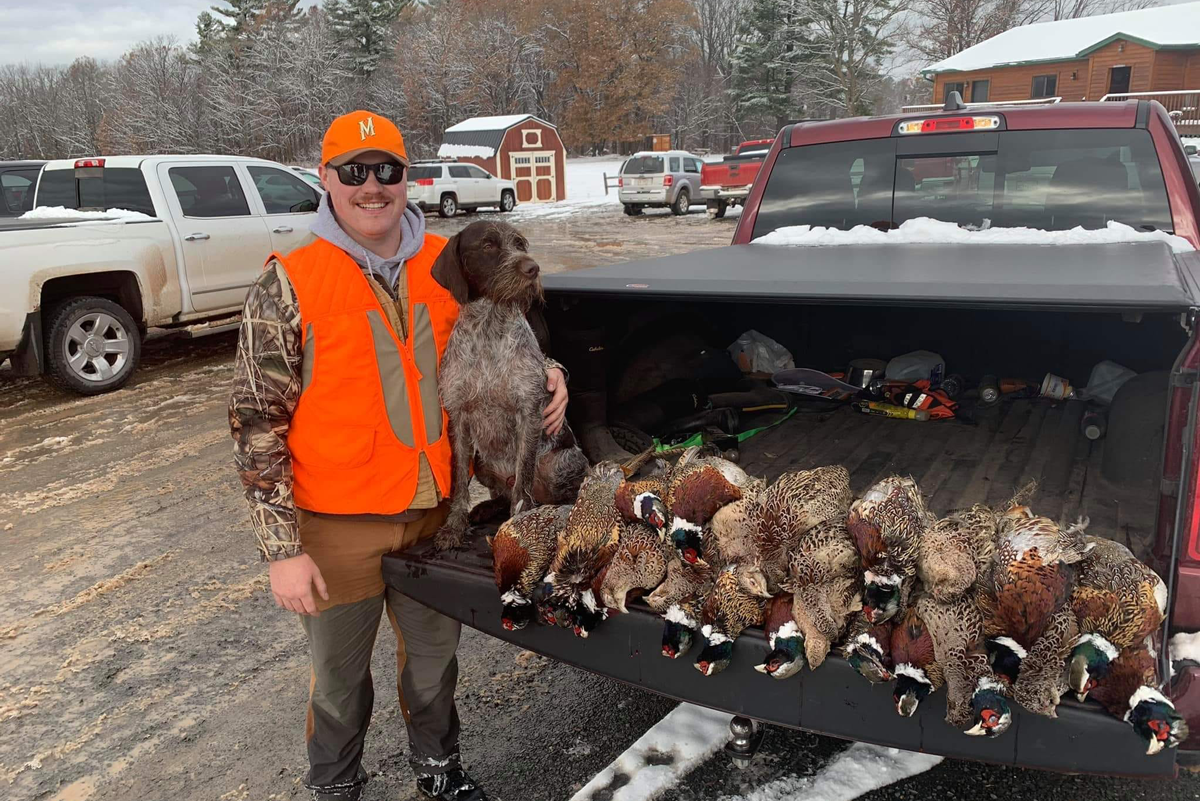Experience the Rush of The Flush
When fall rolls around hunters start to get excited about exploring the fields for the beautiful Pheasant. There is something that is exciting about hearing a rooster (Male Pheasant) explode from the tall grass and fly off into the sunrise/sunset. This is called the flush. It is something I have experienced countless times, and I still get as excited today as if it was the first time I experienced it.
Pheasants a Brief History:
Pheasants were brought to the States in the late 1800s as game birds from China. They adapted well to the Midwest and you can now find native pheasants there. Dakotas are the Mecca of great pheasant hunting. Of course, you can find wild birds in other areas as well. However, developments are killing off our natural habitats & hunting grounds. To replenish native pheasants, some states stock pheasants for hunting now. These birds are raised on a farm and released into huntable fields throughout the season. Although the farms have been around for years more and more people are hunting farms as a lot of the “wild” birds are now raised as well.
What Do Pheasants Eat?
Pheasants eat plants, berries, corn, insects, worms, spiders, and seeds. Basically, pheasants are no different than any other bird. Their diet largely consists of items found in their natural environment.
Natural Habitat
Pheasants prefer fields with tall grass, wetlands, and farmland.
Hunting Without A Dog
hunting upland birds without a dog is much more difficult than hunting with a dog. You are now doing all the work of a dog (finding, flushing & shooting). Not the ideal situation, but it can be done. Pheasants do not respond to calls, or decoys. Pheasants will run first then fly as they are vulnerable in flight. However, if you are walking behind a bird and stop, the bird will get nervous and flush usually. If you are hunting dogless, try to not be friendless. The more boots on the ground pushing an area, the more likely you are to see a bird flush.
Hunting With A Dog
Hunting pheasants with a well-trained bird dog, is one of the simple joys in life.
There are really two types of dogs to consider, flushers and pointers.
Flushers will work some sort of pattern, usually close to the hunter. The dog will get “birdy” as they get closer to a bird. Now, “birdy” is different for all dogs. Some dogs pick up speed, some dogs will vigorously wag their tails, some dogs will start to get closer to the ground like they are ready to pounce. There is no way for me to describe all the “birdy” features. But, a good handler will know when their dog is birdy. When your dog gets birdy, get ready to take a shot, because the flush will happen at any moment.
Pointers will also work some sort of pattern as well, but they will usually range out a little further than flushers. Pointers shouldn’t flush the bird until the hunter gives a command, or the hunter flushes it. They will stay on point until then. Both flushers and pointers have their pros and cons and it really comes down to the owner’s preference.
Pheasant hunting Dog Breeds
Most common flushing dog we see is labs. Not all labs are flushers but that is how they were originally breed so most of them do. Some believe flushers are better because pheasants run, so they want a dog that will chase and flush the bird. Additionally, labs are great duck hunters so if you like both birds to hunt this may be the ideal dog for you.
I like pointers and own a couple German Shorthairs. Personally, to watch a pointing dog work is much more appealing to me, pretty amazing actually plus a lot of our hunts here at Coyland can be warm as most of our hunters are fair weather hunters for pheasants and the smaller lighter dogs do better in the heat. It is hunters/family preference.
Hunting Gear
I wear a bright orange shirt/jacket, orange hat and orange bird hunting vest. Your vest should hold a couple of birds, some shells, and essential gear. I also wear briar-proof pants to try and repel burrs and seeds from sticking to me. For your feet, buy a pair of hunting boots that are more similar to hiking boots than anything else. You will be doing a lot of walking.
Dog Gear
You will want an e-collars, or shock collars. These will protect your dog from running off and help them listen better. Also, water and treats are a necessity.
Shotgun Recommendations.
You will want a gun that is light enough to carry all day long and comfortable enough to take numerous shots with. This leaves you with two realistic choices, the 12 Gauge, and the 20 gauge. With a 20GA you will lose some range out in the field but, carrying around a loaded 20GA for a day hunt won’t wear your shoulder out as quickly. Popular gun choices are over unders, side by sides, and semi-autos. All three have their pros and cons. Most common is probably a 12 gauge.
Pheasant Hunting Ammunition
The most common rounds are 4-6 shot sized lead. Some states make you use Steel shot, so you might want to double check wherever you are shooting what they require.
What to expect
If you’re hunting with dogs, it’s common for them to pick pheasants that are hiding in the grass and don’t run or flush up off the ground. This can happen with wild birds as well as farm birds. The birds are motivated to move by how pressured they feel by a predator. As the season goes on, the birds begin to wise up and will spook at a distance. Generally, I do not recommend shooting birds on the ground in tall grass for safety reasons. Why? It’s hard to see in tall grass, if you can’t see your target and what’s beyond it, it’s not safe to take a shot. You could unintentionally shoot a dog that was on the bird, a hunter, a bird you weren’t supposed to shoot (hen maybe), or something else. My personal preference is to engage in the sport of taking birds in flight.
Come hunt with us at Coyland!


